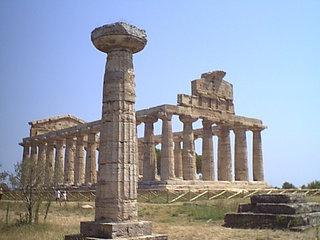Ancient Greece will always be of interest to mankind. Each archaeological find relating to those distant times immediately attracts universal attention. And this is not at all surprising, because thanks to this civilization we have so much unique knowledge in all areas of life. Mathematics, physics, astronomy, architecture, literature, medicine and much more received powerful development in Greek society, which helped all of humanity in later eras.

The ancient Hellenes always sought to achieve the ideal. In their culture, beauty and harmony were praised. The achievements of the Greeks in architecture are considered extremely important. Their desire to subordinate everything to the correct mathematical order is perfectly traced in the complete harmony of architecture. With the beginning of the use of stone as the main building material, new trends in architecture began to appear. The first stone temples inherited the traditions of the former wooden structures of a sacred nature. However, over time, more and more differences became. So there was a Doric order. The column tapering to the top was installed directly on a stone platform (stylobate), it had no base, the capital of the column consisted of a round slab - echin and square - abacus. Wide rectangular beams were laid horizontally above it - architrave. In the Doric warrant, the capital of the column was not decorated with decorative trim. A wonderful example of this order is the Parthenon, a temple dedicated to the
goddess Athena, located in
the Acropolis of Athens. It was built according to all the canons of the Doric order. It still amazes with its perfectly calculated proportions and restrained proud beauty.
During the war between Athens and Sparta, an ionic order was established in Greek architecture. It got its name due to the fact that it arose in Ionia. This order is distinguished by elegant light proportions and decorative design; it is characterized by decoration on the capitals of columns in the form of double spiral ornaments. Nike Apteros and Erechtheion Temple were built in this style. They are also located in the Acropolis of Athens. Compared to the rigor of the Doric architectural
order, Ionic strikes the eye with almost feminine elegance. A wonderful example is the famous portico of the Caryatids in Erechtheion. Using statues of girls instead of columns enhances the impression of lightness and surprises with its magical beauty. Another innovation was the decoration of the abacus (this is the top plate of the column of the column) with a beautiful variety of carvings.
In the era of Hellenism, the
Corinthian order became popular
, a column of the column magnificently decorated with decor became its characteristic feature. It was made in the form of a beautifully curled acanthus leaf. The use of the Corinthian order in the interiors of ancient Greek temples further increased the significance and sacred beauty of the places where statues of the gods were installed. The amazingly high capitol of the column gave the impression of elevation and lightness of
architectural proportions in the rooms.
Subsequently, Doric, Ionic, and Corinthian architectural orders underwent changes in canonical proportions, acquired more or less simplicity and lightness, but at the same time they never lost the symmetry laws that their creators admired, and now we are.